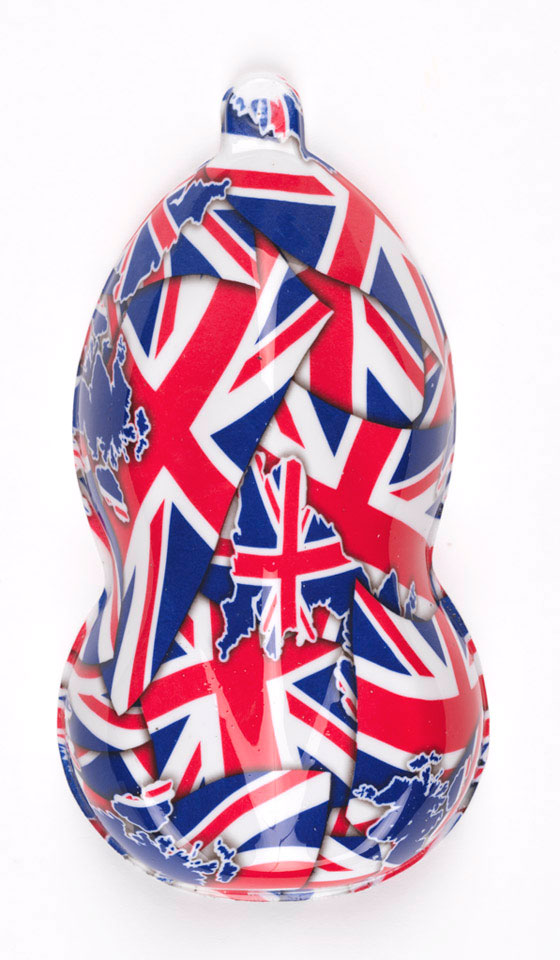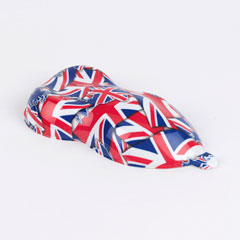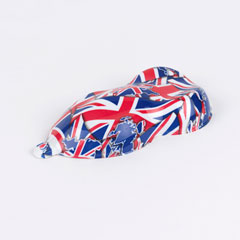
Online Collection
« Prev - 1 of 1 results - Next »
Hydrographic sample, used to demonstrate the customisation of prosthetic limbs and orthotics, 2018 (c)
Manufactured by Blatchford at the Defence Medical Rehabilitation Centre, Headley Court, Surrey, 2018.
Union flag and map of the United Kingdom design sample.
Hydro-dipping, or immersion printing, is a process that allows graphics printed on polyvinyl alcohol film to be applied to three dimensional objects using a water bath. Used in a variety of fields such as car manufacture and gaming, the technique has been adopted by prosthetic manufacturers as a way of customising and personalising prosthetic limbs and orthotics for children and adults alike.
Improvised Explosive Devices (IEDs) were widely used by insurgents in Afghanistan and Iraq to inflict lethal and debilitating injuries on Coalition forces during the conflicts that developed after the terrorist attacks on the United States on 11 September 2001. A Ministry of Defence report, 'Amputation Statistics 1 April 2014 - 31 March 2019', published on 1 August 2019, records that from 7 October 2001 to 31 March 2019, 333 UK service personnel, serving in the Afghanistan or Iraq, suffered injuries that included a traumatic or surgical amputation.
NAM Accession Number
NAM. 2019-02-14-1-4
Copyright/Ownership
National Army Museum Copyright
Location
National Army Museum, Study Collection
Object URL
https://collection.nam.ac.uk/detail.php?acc=2019-02-14-1-4



